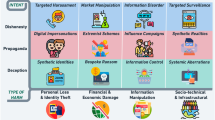Abstract
An important function of an agent is to be “on the lookout” for bits of information that are interesting to its user, even if these items appear in the midst of a larger body of unstructured information. But how to tell these agents which patterns are meaningful and what to do with the result? Especially when agents are used to recognize text, they are usually driven by parsers which require input in the form of textual grammar rules. Editing grammars is difficult and error-prone for end users. Grammex [“Grammars by Example”] is the first direct manipulation interface designed to allow non-expert users to define grammars interactively. The user presents concrete examples of text that he or she would like the agent to recognize. Rules are constructed by an iterative process, where Grammex heuristically parses the example, displays a set of hypotheses, and the user critiques the system's suggestions. Actions to take upon recognition are also demonstrated by example.
Similar content being viewed by others
References
T. Bonura, and J. Miller, “Drop zones: an extension to LiveDoc,” SigCHI Bull. vol. 30, no. 2, pp. 59-64, April, 1998.
J. Cowie, and W. Lehnert, “Information extraction,” Commun. ACM, vol. 39, no. 2, January 1996.
A. Cypher (ed.), Watch What I Do: Programming by Demonstration, MIT Press: Cambridge, MA, 1993.
P. Langley, “Machine learning and grammar induction,” Mach. Learn. J. vol. 2, pp. 5-8, 1987.
H. Lieberman, “Tinker: a programming by demonstration system for beginning programmers,” in A. Cypher (ed.), Watch What I Do: Programming by Demonstration, MIT Press: Cambridge, MA, 1993.
H. Lieberman, “Integrating user interface agents with conventional applications,” ACM Conf. Intell. User Interfaces, San Francisco, January, 1998. Revised version to appear in Knowledge Syst. J.
D. Maulsby, and I. H. Witten, “Learning to describe data in actions,” in Proc. Programming by Demonstration Workshop, Twelfth Int. Conf. Mach. Learn., Tahoe City, CA, July, 1995, pp. 65-73.
D. Maulsby, “Instructible agents,” Ph.D. Thesis, University of Calgary, Canada, 1994.
J. Miller, and T. Bonura, “From documents to objects: an overview of LiveDoc,” SigCHI Bull. vol. 30, no. 2, pp. 53-59, April, 1998.
B. Myers, “Tourmaline: Text Formatting by Demonstration,” in A. Cypher (ed.), Watch What I Do: Programming by Demonstration, MIT Press: Cambridge, MA, 1993.
B. Nardi, A Small Matter of Programming Perspectives on End User Computing, MIT Press: Cambridge, MA, 1993.
B. Nardi, J. Miller, and D. Wright, “Collaborative, programmable intelligent agents,” Commun. ACM, March, 1998.
M. Pandit, and S. Kalbag, “The selection recognition agent: instant access to relevant information and operations, in Proc. Intell. User Interfaces '97, ACM Press: New York, 1997.
Author information
Authors and Affiliations
Rights and permissions
About this article
Cite this article
Lieberman, H., Nardi, B.A. & Wright, D.J. Training Agents to Recognize Text by Example. Autonomous Agents and Multi-Agent Systems 4, 79–92 (2001). https://doi.org/10.1023/A:1010018830260
Issue Date:
DOI: https://doi.org/10.1023/A:1010018830260




